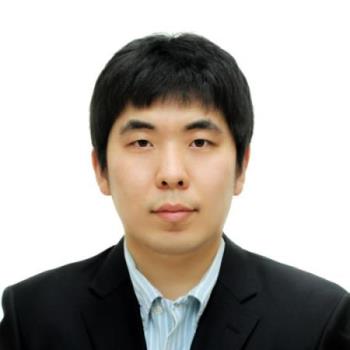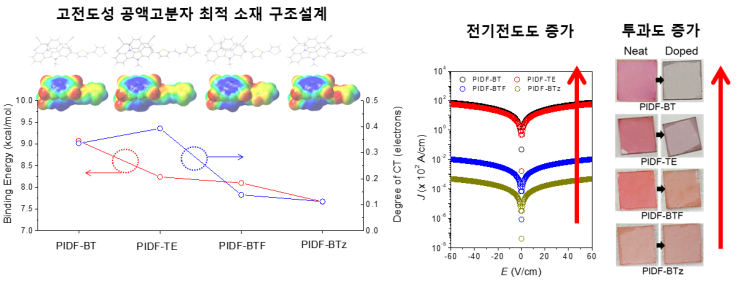- About Ajou
- Admission
- Academics
- Research
-
International
International
- Campus Life
-
News and Event
News and Event
-
AUT
AUT
Ajou News
NEW Prof. Kim Jong-hyun’s team uncovers the mechanism behind the design of a conjugated polymer
- 2020-06-16
- 3099
May 12, 2020

A team of researchers led by Ajou University’s Prof. Kim Jong-hyun has unraveled the mechanism behind the design of a conjugated polymer. Capable of maximizing conductivity, these polymers are emerging as key next-generation components for electronics.
The team included two professors from Ajou - Kim (Dept. of Applied Chemistry and Biological Engineering and Graduate Dept. of Molecular Science and Technology, pictured) and Seo Hyung-tak (Dept. of Materials Science and Engineering and Graduate Dept. of Energy Systems) - as well as Prof. Kim Bong-gi of Konkuk University and Prof. Park Hui-joon of Hanyang University. The team’s study was published as part of the online version of Advanced Functional Materials, dated May 4.
Entitled “Unraveling Doping Capability of Conjugated Polymers for Strategic Manipulation of Electric Dipole Layer toward Efficient Charge Collection in Perovskite Solar Cells,” the article also featured Yoon Sang-eun, currently enrolled in the postgraduate program in the Department of Materials Science and Engineering at Ajou, as principal investigator.
The conjugated polymers at the heart of the article are organic compounds recently drawing significant attention as the potential next-generation alternative to semiconductors. These conductive organic compounds boast properties superior to those of inorganic ones. Chemical doping, in particular, can enhance the conductivity of these polymers to a par with that of metals, making them even more likely as a candidate material for dipoles in electronic devices. These polymers also have the added benefits of being lightweight, pliable, and not so costly to manufacture.
The team’s work is noteworthy for unraveling the exact mechanism behind the design of the conjugated polymers, and particularly why they are so highly conductive.
The researchers identified the skeleton of the conjugated polymer capable of exchanging charges at maximum efficiency with the dopant (a substance added to the semiconductor-manufacturing process). They also introduced a substituent able to optimize diffusion of the dopant, creating a highly conductive (200 S/cm) membrane and determining the doping mechanism. The team then added the highly conductive conjugated polymers to the hole transporting layer to develop a high efficiency (20 percent or more) perovskite solar cell.
Prof. Kim commented: “Our latest study documents the groundbreaking discovery of a new mechanism that can dramatically improve the conductivity of polymers. Our findings will lead to the development of polymer-based, pliable and stretchable highly conductive dipoles.”
The study was possible with support from the Ministry of Education’s University-Centered Research Lab Support Program (for Molecular Science & Technology Research Center).

